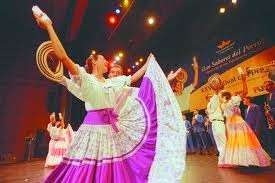Where did it originate, and that is the dance?
 The origin of the word dance is uncertain. However, there is the Italian word "dance", and in French the term "danse". It appears that these voices had been the Spanish, with the same meaning in the contemporary sense.
The origin of the word dance is uncertain. However, there is the Italian word "dance", and in French the term "danse". It appears that these voices had been the Spanish, with the same meaning in the contemporary sense.Some propose that comes from the English "dance", but the evidence is very poor, and did not seem at all that has been. Is considered beyond the French, there exist a similar term Hispano or Latino origin.
Dance and dance is an art form where the movement of the body, usually with music used as a form of expression, social interaction, for entertainment, artistic or religious. It is the movement in space that is made with a part or the whole body of the performer, with a certain beat or rhythm to reflect individual feelings, or symbols of culture and society.












